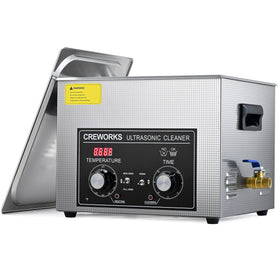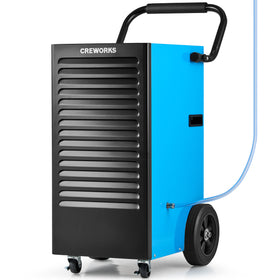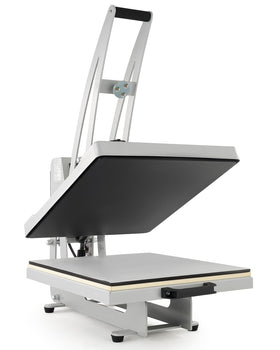Excess humidity in your home, basement, or warehouse can lead to mold growth, musty odors, and even damage to furniture or stored items. If you’ve been wondering how to keep your space dry and comfortable, you’re in the right place! In this article, we’ll show you how to use a dehumidifier step by step, so you can say goodbye to excess moisture and hello to a fresher, healthier space.
Understanding Your Dehumidifier: Diagram & Display Panel
Before getting started, it’s helpful to familiarize yourself with the components of a dehumidifier. For example, we’ll use the Creworks 130 PPD Commercial Dehumidifier to illustrate the main parts.


Understanding what each control does will make it much easier to set up and operate the unit. By knowing how to adjust the humidity, check the water level, and switch between manual or automatic modes, you can ensure your dehumidifier runs efficiently.
How to Use a Dehumidifier
Using a dehumidifier properly is straightforward when you follow these steps:
Step 1: Startup
Plug in the device to turn it on and its display panel should light up, showing the current ambient humidity detected and the two graphical buttons. For optimal performance, wait a minimum of 24 hours after receiving your package before plugging in this device for the first use.
Step 2: Default Operation
Press the power button to activate dehumidification. The display panel should reveal the other three buttons (M, +, and −) and the current ambient temperature detected.
Step 3: Mode Selection
Press M to toggle between manual, continuous, and night modes.
• Manual Mode: The timer and acceptable humidity are both manually adjustable. The compressor and blower work in reaction to the ambient humidity as below.

Note: In this chart, AH represents ambient humidity and SP represents setpoint
• Continuous Mode: The compressor and blower work constantly and continuously without regard to the ambient humidity. The timer is manually adjustable while the acceptable humidity is not.
• Night Mode: The dehumidifier in night mode works mostly the same as in manual mode. However, no operation of the graphical buttons for 10 seconds will cause the display panel to become dim. Pressing any button will resume its normal brightness. Moreover, no alarm will sound when any error occurs.
Step 4: Humidity Adjustment
Press + or – to increase or decrease the acceptable humidity. Each time you press + increases the allowable humidity for the room by 1% up to a maximum of 90%. Each time you press – decreases the allowable humidity by 1% down to a minimum of 20%. To save your change, wait without operation until the displayed setpoint stops flashing while the current ambient humidity display resumes.
Step 5: Timed Operation
When dehumidification is inactive, press the time button to set the number of hours after which dehumidification will automatically begin. When dehumidification is operating, pressing this button sets the number of hours after which dehumidification will automatically stop. Each time you press + increases the number of hours by one up to a maximum of 24 hours, after which the timer resets to 0 hours. Each time you press – decreases the number of hours by one down to a minimum of 0 hours, after which the timer resets to 24 hours. To save your change, wait without operation until the displayed setpoint stops flashing. To cancel, press the time button again. When dehumidification is off, setting the timer to 0 hours means dehumidification will not start by itself. When timed dehumidification is on, resetting it to 0 hours resumes untimed operation.
Step 6: Temperature Unit Conversion
By default, the ambient temperature value is displayed in degrees Fahrenheit (°F). To toggle to degrees Celsius (°C), hold + until the target value is displayed.
Step 7: Shutdown
Timed dehumidification will stop automatically when the timer expires. To cease it earlier or to stop untimed operation, press the off buton. When finished with all, unplug this device to shut it down completely. If using a water pump, turn it off after the device is fully drained.
Creworks 130 PPD Commercial Dehumidifier-Your Ideal Choice
If you're seeking a reliable and efficient solution for large, damp spaces, the Creworks 130 PPD Commercial Dehumidifier is a top choice. Here’s why:
-
High Capacity: It can remove up to 130 pints of moisture per day. Idea for basements, crawl spaces, garages, and warehouses.
-
Coverage Area: Effortlessly combats excess moisture and musty odors in large areas ranging from 500 to 1,440 sq. ft.
-
Control Panel: Easily adjust the timer (1–24 hr.), set humidity levels (20–90%), and select from three modes.
-
Durable & Efficient: Remove 60 ppd at AHAM and 130 ppd at saturation, creating a drier space within hours.
Investing in this Creworks commercial-grade unit ensures reliable, efficient, and low-maintenance humidity control for large or challenging spaces.
Conclusion
Proper use of a dehumidifier can greatly improve indoor comfort, protect your belongings, and prevent mold growth. By understanding the controls, placing the unit correctly, setting your target humidity, and performing regular maintenance, you can get the best performance from your dehumidifier. For larger or more humid spaces, a model like the 130 PPD Commercial Dehumidifier provides a practical and efficient solution for maintaining healthy humidity levels.








Leave a comment